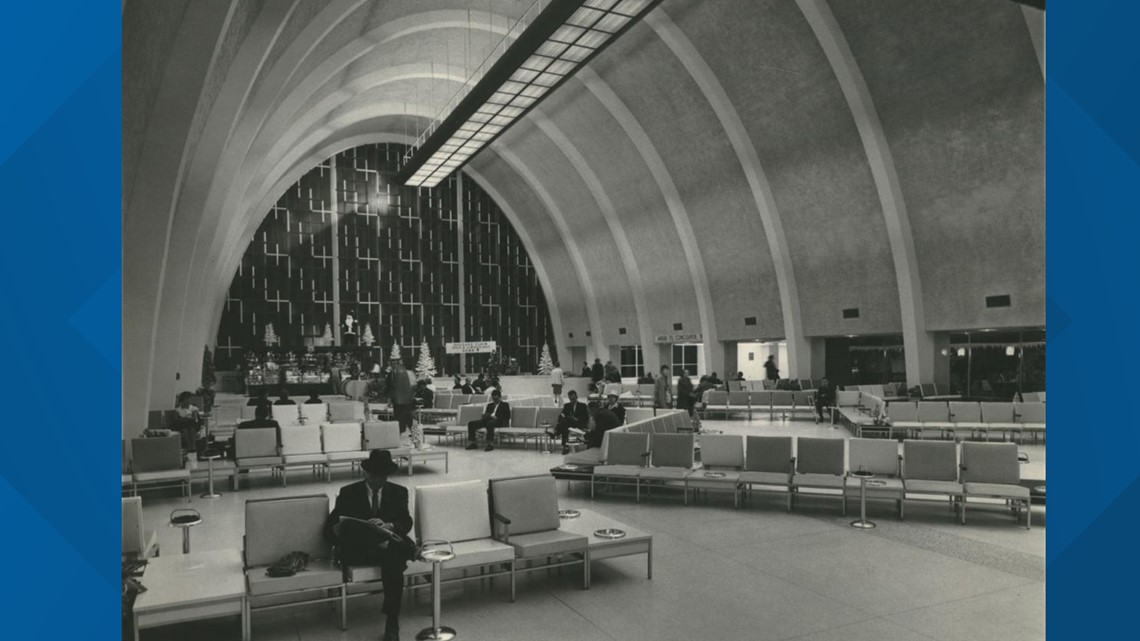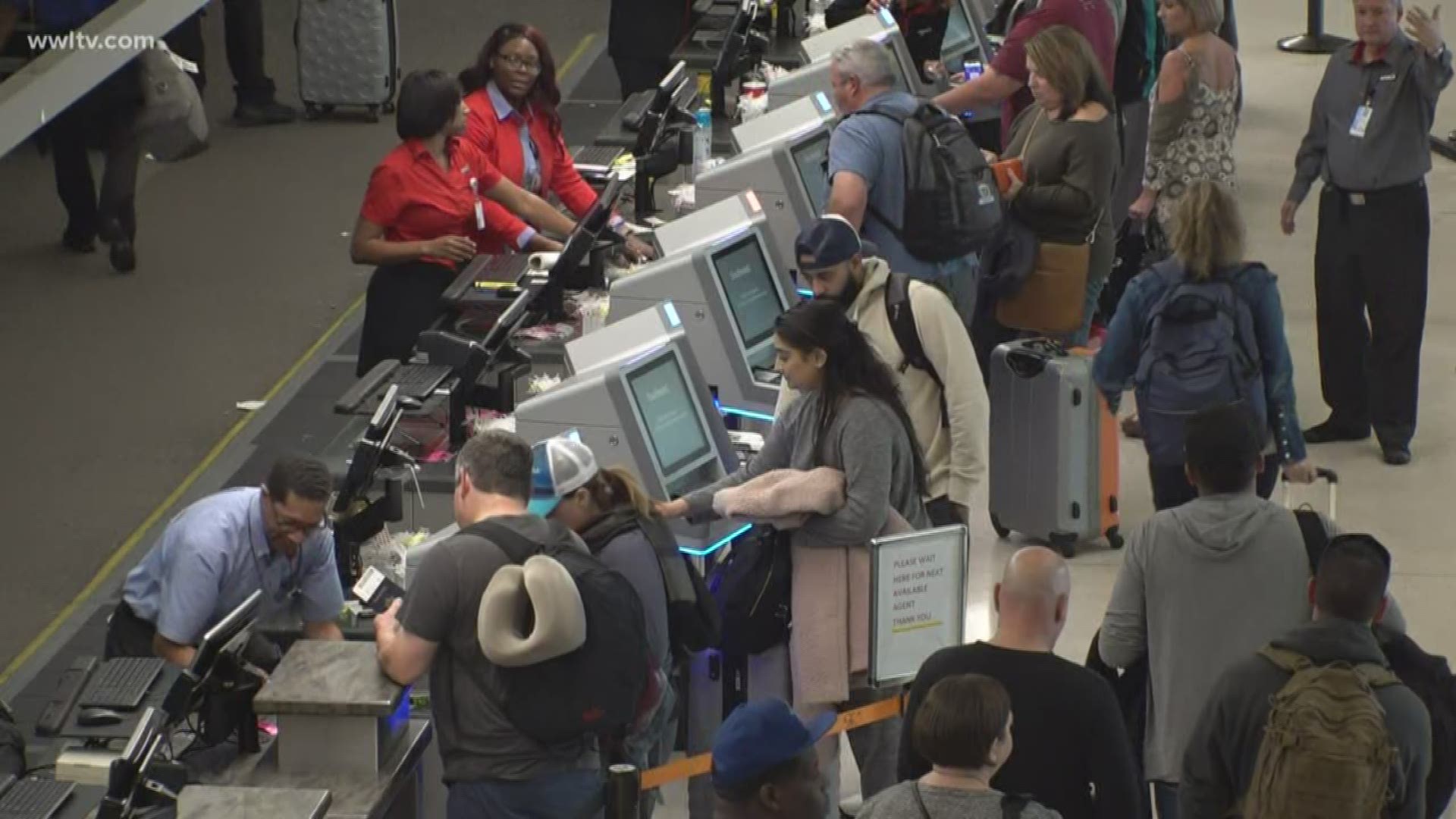The opening of the new, $1.3 billion terminal at Louis Armstrong New Orleans International Airport on Wednesday comes nearly 60 years to the day after the original terminal was dedicated.
Built at a cost of $7.5 million, the original Moisant International Airport terminal (as the airport was known until 1961) was dedicated on Wednesday, Nov. 11, 1959, though it didn’t officially open to air traffic until the following weekend.
Mayor deLesseps “Chep” Morrison spoke at the ceremony, which also featured remarks from Jefferson Parish President Charles W. Spencer and Kenner Mayor Joseph Maggiore, according to an article in The Times-Picayune.
“We look forward in the near future to meeting the challenge of new jet flight requirements,” Morrison said in his remarks. “We are going to keep New Orleans on the high road of progress. This beautiful terminal building, standing boldly above the ribbons of runways and aprons, is a dramatic symbol of the fact that the city of New Orleans is going to be the city of tomorrow.”
James Pyle, deputy director for the Federal Aviation Administration, attended the ceremony, along with a long list of state and federal officials. As a sign of the city’s efforts under Mayor Morrison to become an “international gateway” and boost air traffic with Latin America, representatives of the governments of Bolivia and Guatemala were also on hand.
Music was furnished by the bands from Martin Behrman and East Jefferson high schools. The Rev. Patrick Donnelly, S.J., president of Loyola University, delivered the invocation.
The terminal officially opened for business the following Sunday at 12:01 a.m.
The airport itself was named for stunt aviator and aviation pioneer John Bevins Moisant, who died in a flight near the airport in 1910.
Moisant Field came into existence in the 1940s when it was clear that Lakefront Airport, which opened in 1934, wouldn’t be able to meet the demand of increased commercial traffic and it would be too expensive to expand at that site.
The original Moisant Air Field, originally a cow pasture and stock yard (hence the MSY symbol for Moisant Stock Yards, which remains to this day) opened in 1946, though it welcomed its first plane landing in 1944.


Construction of the airport had been planned as early as 1941 but was delayed by World War II when the land for Moisant was taken over as an air base. For more than a decade following the war, Moisant Field serviced passengers out of a Quonset hut.
According to a 1959 Times-Picayune article, by 1948, two years after its opening, Moisant was the largest commercial airport in the country, with a field of 1,360 acres and a 30,000 square-foot administration building that served 2,500 passengers daily.
By 1958, Moisant serviced more than 600,000 passengers and handled more than 3,000 tons of cargo.
The new terminal was ten times bigger than the original facility. The three-level, concrete, steel and glass structure was designed by the New Orleans architectural firms of Goldstein, Parham and Labouisse and Benson and Riehl. It was built by the J.A. Jones Construction Company.
Even in 1959, parking at the airport was apparently a concern, though the new facility promised hundreds of parking spaces. The newspaper said the new facility nearly tripled the amount of spaces, from 300 to more than 800. “Parking has always been a severe problem,” said Charles Duke, director of aviation. “We’ve continually had to apologize for our lack of space.”
The new terminal serviced 11 airlines at the start and employed some 1,500 people, according to The Times-Picayune. There were just two concourses, and amenities such as a coffee shop, bar, barber shop, and “modern, clean restroom facilities.”
“There are conveniences aplenty for air travelers using Moisant International Airport’s new passenger terminal,” wrote Times-Picayune reporter Fritz Harsdorff. “Grandpa can tackle a steak and watch the planes go by in the swank main dining room while Dad grabs a drink in the nearby cocktail lounge and Mom beds Junior down in the nursery. Where’s Grandma? She’s out in the big main lobby traipsing around in the 1500-square-foot gift shop.”
In 1961, Moisant’s name was officially changed to New Orleans International Airport. It saw major expansions in 1974 (bringing the number of gates to 42) and 1996.
In 2001, it was renamed Louis Armstrong New Orleans International Airport, to coincide with the 100th birthday of the New Orleans music legend.

